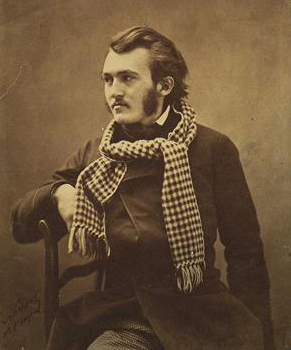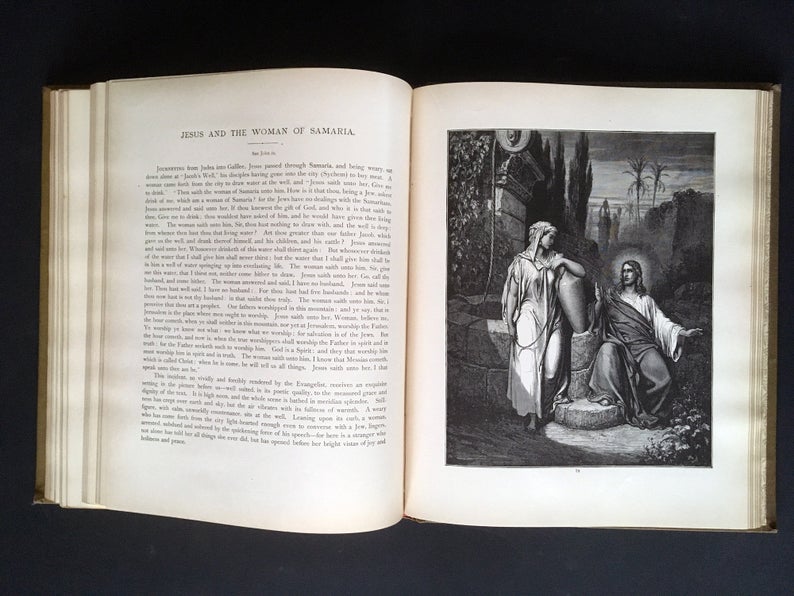You might be surprised if you knew how often your museum’s website delivers impactful experiences to visitors all over the world. Most of these experiences fly well under the radar of analytics reports, and so you never really know when they’re happening. Analytics reports don’t measure discoveries students make as they do research using your collection. They don’t highlight scholarly dives into background data. The top ten page views report doesn’t feature an art lover’s discovery of a new school of work as they soak in painting after painting longing to see these works in person. Traffic reports don’t feature an individual’s deep Google search that led to a post on ancient artifacts that brought new and timely insight from an old post—giving it new life as if it were just published yesterday. These kinds of interactions are one-off events, as far as analytics are concerned. But they can also be the most impactful events happening in and through your website.
We often refer to these kinds of impactful engagements as “long tail” events. Long tail content consists of the many objects, blog posts, old exhibition essays, and other pages that never make the top ten page report in your analytics. This content rests quietly forgotten, until that random connection, that unanticipated relationship, that unexpected search result that leads to a moment of deep engagement. But as quiet as these events are in terms of analytic perception, they speak volumes to those that experience them.
In fact, there’s an inverse relationship between the frequency with which a page may be viewed, and the level of engagement and impact it may have. Your hours and parking directions are certainly among your top page performers. But there’s nothing terribly engaging about that information, despite its practical importance. But that three-year-old post that shows you how to write your name in hieroglyphics may still generate traffic from search engines. And these kinds of visits also tend to have the longest dwell times. That’s because that moment when a searcher, in the pursuit of knowledge, finds the information they were looking for, is an instant of peak engagement.
The Intersection of Interest and Discovery
You see, all those many forgotten pages, while rarely if ever making appearances in the top ten, register higher levels of engagement not just because of their compelling nature, but also because of the higher level of intention, and deeper focus of interest a visitor likely arrived with, because of how and when they arrived at these pages. When a searcher discovers a post on hieroglyphics it’s usually not by accident. They would have typed detailed multi-word phrases into Google in order to discover your page. And so they arrive pre-loaded with intense interest. The payoff to such active searching, on these long tail pages, using long tail search queries, is far greater than when they hit your homepage from Google having simply searched your museum’s name to check on your hours of operation.
What’s more, not only is impact and engagement higher across the long tail, when you add together these pages, all those pages with just one or two visits each, as a group, they may be contributing as much to your overall traffic as your top performers, but with much more impact. After all, what kinds of interactions matter more, quick checks on your hours of operation page, or deep zooms of your objects on your collections pages and long reads of your scholarly content?
But while these long tail discoveries are valuable, they are also somewhat random. They are serendipitous. And you can’t plan serendipity, right? It just happens.
Strategically Planning for Serendipity
It’s true that you can’t make serendipitous things happen, but you can put your content in serendipity’s path. Knowing that these kinds of valuable moments do occur, you can encourage such “accidental” moments to flourish and multiply. And with a bit of strategic planning and with the right sets of tools, you might be able to come alongside a visitor in these moments of engagement to ask them to make an impactful contribution to your museum.
Sadly, these unique and valuable events usually go unnoticed, and un-utilized. Commonly viewed “head of the tail” content gets full recognition, while the more engaging visits, sprinkled lightly across the long tail, never make an appearance in the top ten performers lists and thus their important contribution goes unrecognized.
Of course, you have to maintain your chief informational pages like current exhibitions and upcoming events. But if all your content development time is taken up with your basic foundational content, and you rarely invest in more thoughtful and engaging content, the overall quantity of engagement will be curtailed. And with a truncated tail there will be fewer delightful serendipitous discoveries.
So while you never can tell exactly which blog posts or digital stories may end up satisfying the curiosity of the few, you can influence such occurrences by simply getting your content out into the steam of discovery. You need to put content out there where it may intersect with thoughtful searches leading to “accidental” discoveries.
Getting Serendipity into the Spotlight
One reason that museums don’t invest enough time developing collection-oriented content is their lack of awareness of the kinds of valuable and impactful experiences that really are happening across the long tail. Individual low page counts just don’t yield attention.
But suppose they did? Suppose every time someone happened upon something vital, something compelling, and benefited from your collection and your content, suppose you got alerted to this activity every time? Suppose you got an email from every visitor that discovered something from your content? How many emails do you suppose you might get each day? Would a steady flow of such descriptions of serendipitous discovery motivate you to produce even more? Would daily positive reinforcement be enough to move you to finally write that post you’ve been thinking about? Or get that digital story you’ve been dreaming of off the ground? Well just because these moments are hidden doesn’t mean they are not happening. Don’t let their low profile keep you from appreciating that they are in fact happening. And they mean a lot to those who discover them.
Must Serendipity Stay Submerged?
But what if we could bring some of these occasions into the light? After all, everyone gets motivated by concrete stories of discovery. And what if we were not only able to raise your awareness of some of these moments, but also motivate some of these visitors to make contributions to your museum, or become members, or volunteers? Wouldn’t that add even more motivation for content production?
Can we do that? How would we begin to make such interactions occur? With today’s online marketing tools, it’s quite possible. It just takes a little thought, planning, and a bit of advance implementation. You just need to strategize for serendipity.
Without getting too technical, or too deep into the weeds of marketing automation, I’ll describe how these kinds of events might be detected and how your website might engage visitors at peak interest.
A Recipe For Serendipitous Engagement
With an automated marketing platform activated behind your website, that “listens and looks” for certain kinds of website visitor activity we can set a few conditions to engage long tail visits. For example, we could set an automation to look for visits to story pages (perhaps by looking for a term like “story” in the page url – ex. www.museum.com/story/your-name-in-egyptian-hieroglyphics). Then we could trigger a call to action after 80% of the page has been scrolled anticipating that this visitor has been engaged in reading the article. Upon that event, we can set an automated pop-up call to action that thanks the visitor for reading and asks them to let you know what they’ve thought of your content (thereby collecting an email address and establishing an individual relationship with that visitor for further future automations). The follow-up/thank you stage for that request might then remind the visitor that museums rely on support from visitors like them (online and off) and ask for a small donation.
These kinds of automated interactions could be further segmented. You might create an alternate version based on the location of the visitor (local or non-local). The local segment might ask the visitor to become a member, whereas the non-local might ask for a small donation assuming that non-local visitors would not likely respond to a membership offer. And once you know who this visitor is, and what their activity has been you can tag them and further refine these automated calls to action to fit their profile. (No longer wasting a membership call to action on current members, but rather tailoring your asks to each visitor’s current status.)
The great thing about this kind of automated marketing, unlike wide net general marketing, is that it can be refined and targeted to engage specific kinds of visits and visitors. More individually targeted, yet automated, marketing can lead to better communication with your online visitors. And that communication can be a real encouragement that motivates even more content development.
Plan on Serendipity
You can’t plan to make any particular piece of content perform in these ways, but you can plan to create more and more content for serendipity to work upon. And you can plan to engage these visitors in these moments of discovery to benefit your institution even as they benefit from your collections, programs, and resources.
Are you planning for serendipity, or is your content hiding at home where “accidental” meetings might never occur?










